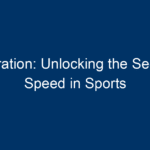Introduction
In a world where everyday ailments and chronic conditions can often feel insurmountable, regenerative medicine emerges as a beacon of hope. This innovative branch of medical science focuses on the repair and replacement of damaged tissues and organs, offering transformative solutions that fundamentally change how we approach healing. With advancements in biotechnology and stem cell research, the potential applications of regenerative medicine are vast, poised to revolutionize healthcare as we know it.
What is Regenerative Medicine?
Regenerative medicine is an interdisciplinary field that combines biology, engineering, and advanced technological approaches to restore or establish normal function in damaged tissues. Unlike traditional medicine, which often focuses on alleviating symptoms, regenerative medicine aims at curing diseases by enabling the body to heal itself.
Key Components of Regenerative Medicine
- Stem Cell Therapy
- Tissue Engineering
- Gene Therapy
- Artificial Organs
1. Stem Cell Therapy
Stem cells are the foundation of regenerative medicine. These remarkable cells possess the unique ability to develop into different types of cells in the body. Once injected into damaged tissues, stem cells can differentiate into the specific cell type needed, promoting healing and regeneration. Conditions like spinal cord injuries, heart disease, and degenerative diseases can potentially be treated with stem cell therapy.
2. Tissue Engineering
This component involves designing and creating biological substitutes that can restore or replace damaged tissues. Using a combination of cells, scaffolding materials, and appropriate growth factors, researchers can cultivate tissues in the lab. These engineered tissues can one day be implanted back into patients to improve their quality of life.
3. Gene Therapy
Gene therapy focuses on modifying or manipulating genes to treat or prevent diseases. By delivering specific genes into a patient’s cells, researchers can correct genetic defects or enhance the healing processes of tissues. It’s a promising approach for hereditary diseases, certain types of cancer, and even viral infections.
4. Artificial Organs
With the growing demand for organ transplants, the development of artificial organs is becoming a critical part of regenerative medicine. These engineered organs can function similarly to natural organs, reducing the dependency on donor organs and addressing the shortage in transplantation.
The Science Behind Regenerative Medicine
Regenerative medicine is underpinned by various scientific disciplines, including biology, pharmacology, and materials science. Research typically involves:
- Understanding cellular mechanisms that promote healing.
- Developing biomaterials that support the growth of new tissues.
- Utilizing advanced imaging techniques to monitor tissue regeneration.
Breakthroughs in Regenerative Medicine
Recent breakthroughs highlight the immense potential of regenerative medicine. For instance, researchers have made significant strides in regrowing damaged spinal cords, repairing heart tissues post-myocardial infarction, and restoring vision in blind patients through retinal cell transplantation.
The Role of Technology
Technology plays a crucial role in advancing regenerative medicine. Three-dimensional (3D) printing, for example, is being utilized to create scaffolds that mimic natural tissues, allowing for more effective implantation and integration within the body. Robotics and biotechnology also enhance precision in surgical procedures, minimizing patient recovery times.
Ethical Considerations in Regenerative Medicine
As regenerative medicine advances, ethical considerations must also be addressed. The manipulation of stem cells, particularly embryonic stem cells, raises significant moral questions. The balance between scientific progress and ethical responsibility is essential to ensure that advancements benefit humanity without compromising moral values.
Regulatory Challenges
The path to clinical application of regenerative medicine therapies is fraught with regulatory hurdles. Regulatory bodies such as the U.S. Food and Drug Administration (FDA) play an essential role in ensuring safety and efficacy, often leading to lengthy approval timelines.
Real-World Applications of Regenerative Medicine
The promises of regenerative medicine are being realized in various domains:
Orthopedics
From cartilage regeneration to treating chronic ankle injuries, regenerative medicine techniques like platelet-rich plasma (PRP) therapy and stem cell injections are changing the landscape of orthopedic treatment.
Cardiology
Innovative approaches in repairing heart tissues following damage from heart attacks are being explored. Studies show that stem cell therapy can promote myocardial regeneration, potentially reducing the incidence of heart failure.
Neurology
For neurological disorders such as Parkinson’s disease and multiple sclerosis, regenerative medicine offers hope. Techniques aimed at repairing or replacing damaged neurons could lead to groundbreaking treatments.
The Future of Regenerative Medicine
The future of regenerative medicine looks promising, with ongoing research and clinical trials paving the way for new therapies. Considering the increasing prevalence of chronic diseases and the aging population, the demand for effective regenerative therapies will only grow.
Personalized Medicine
As precision medicine gains traction, regenerative therapies can be tailored to an individual’s specific genetic makeup. This customization will enhance efficacy and minimize adverse effects.
Growing Access to Treatments
As technologies improve and costs decrease, access to regenerative medicine treatments will expand, enabling more patients to benefit from cutting-edge therapies.
Conclusion
Regenerative medicine represents a paradigm shift in the landscape of medical treatment, promising to unlock new possibilities for healing and recovery. While there are challenges to overcome—ethical considerations, regulatory hurdles, and the need for further research—the potential applications are vast and transformative.
As we stand at the brink of a new era in healthcare, staying informed and engaged in discussions about regenerative medicine is crucial. For patients, practitioners, and policymakers, the future of healing is not just about technology but about a holistic approach that integrates the best of science with compassion for those seeking relief from their ailments.
Actionable Insights
- Stay Informed: Keep abreast of the latest developments and research in regenerative medicine. Subscribe to relevant journals and newsletters.
- Engage in Discussions: Participate in community forums and discussions about the ethical implications and future directions of regenerative therapies.
- Consider Clinical Trials: If you or a loved one is dealing with a chronic condition, explore the option of participating in clinical trials involving regenerative medicine.
- Advocate for Policy Shifts: Support policies that prioritize research funding and streamlined regulatory processes for innovative medical therapies.
By taking these steps, you can contribute to the evolution of regenerative medicine, helping shape a healthier future for all.




